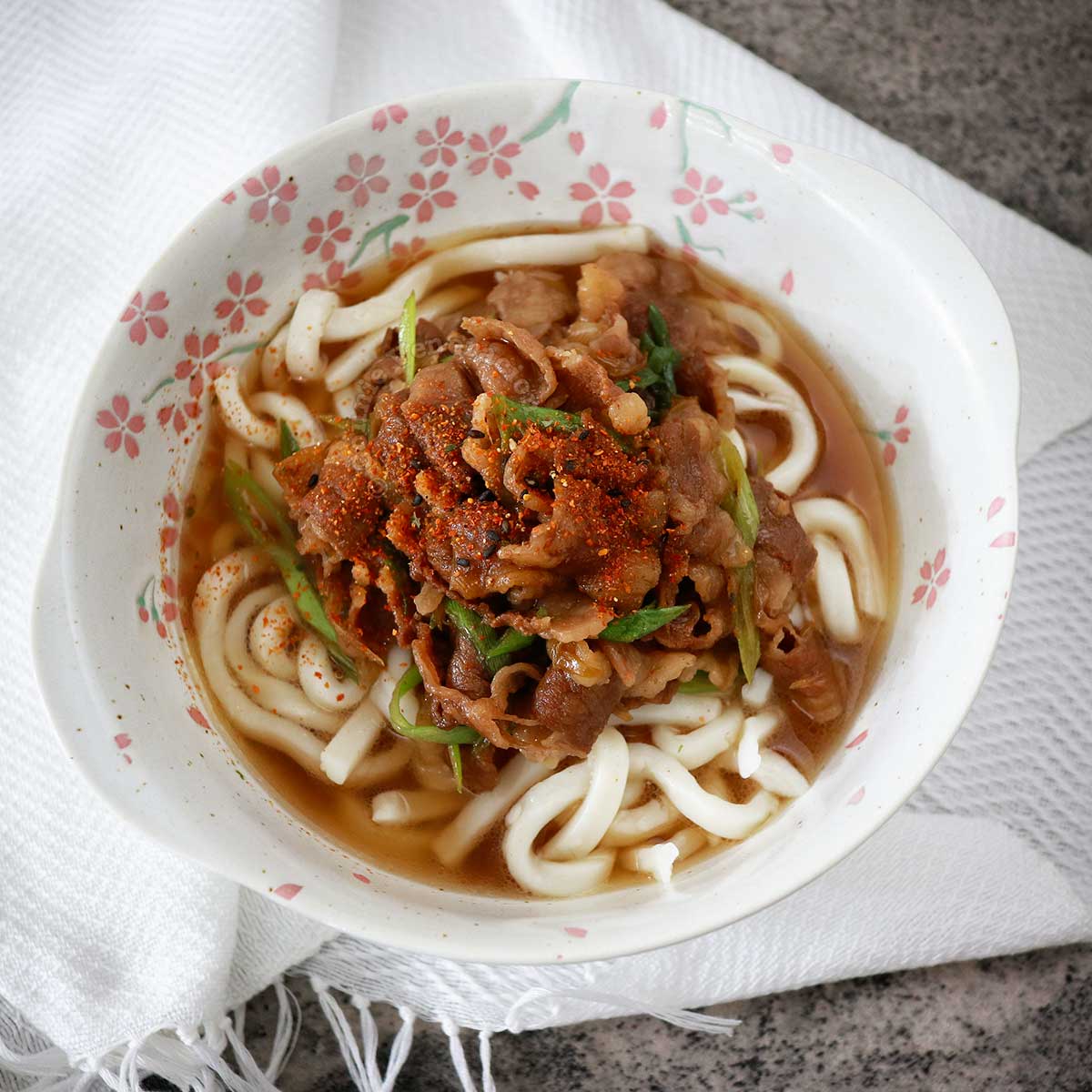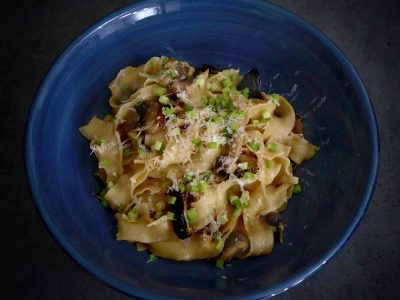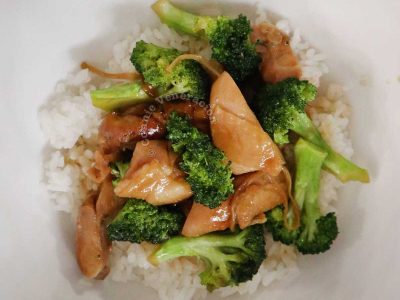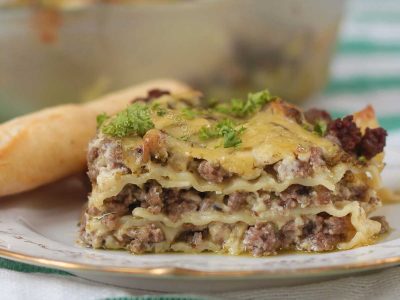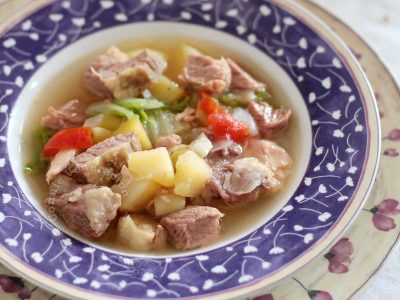Udon used to be my second least favorite Japanese noodle (soba takes the number one spot). Too thick. Too slippery. Too difficult to pick up with chopsticks or with a fork. But this dish changed my perception of the thick slippery noodle. I am now a fan.
What’s so special about this beef udon soup that I became a convert? Everything! And it’s not like it requires a long list of ingredients or a complicated cooking procedure. It’s pretty simple to make, really, but you have to have the correct ingredients.
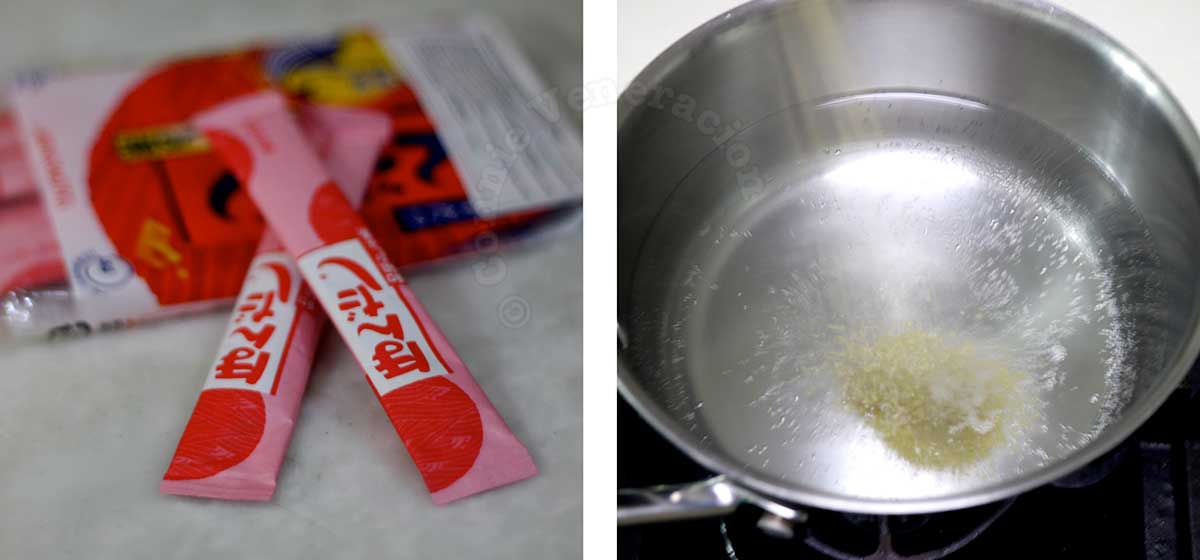
Beef udon soup has three components: the broth, the beef and the noodles. The base for the broth is dashi which is traditionally made by boiling kombu (a type of seaweed called kelp in English) and katsuobushi (shaved preserved skipjack tuna) together.
We do like making dashi from scratch but on days when the sweltering heat makes us balk at spending more time in the kitchen than is necessary, hondashi is a life saver. Hondashi is dashi in powder form. Granules, to be more precise. You can get them from almost any Japanese grocery.
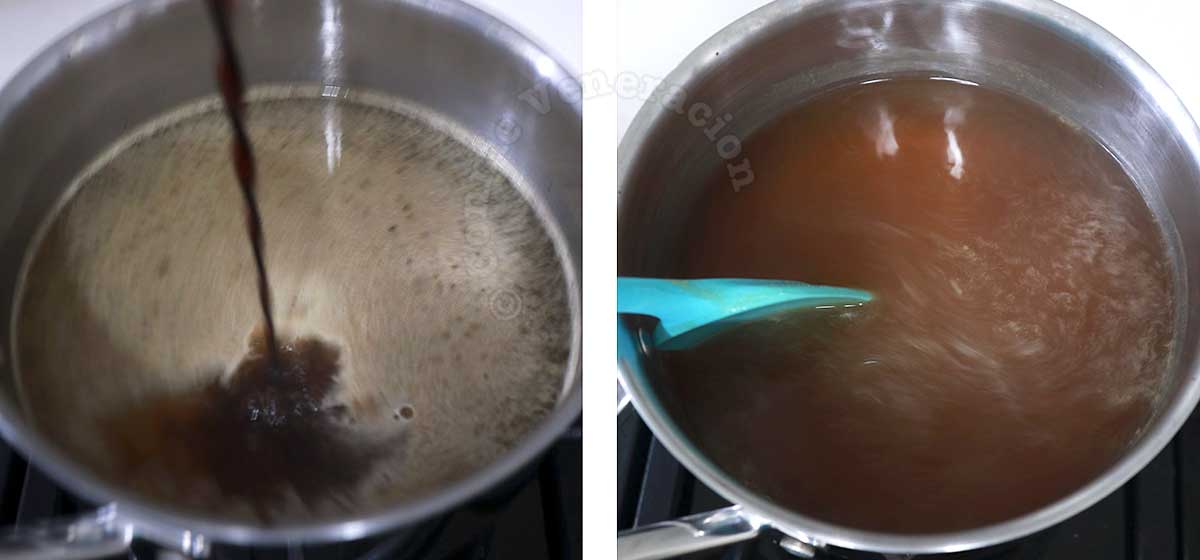
Heat water, stir in the dashi and then you add soy sauce. You need to be careful with the proportion between the water, on the one hand, and the hondashi and soy sauce on the other. Too much hondashi and the broth will taste too strong. Too much soy sauce and it will be too salty. The proportion we prefer is indicated in the recipe below.
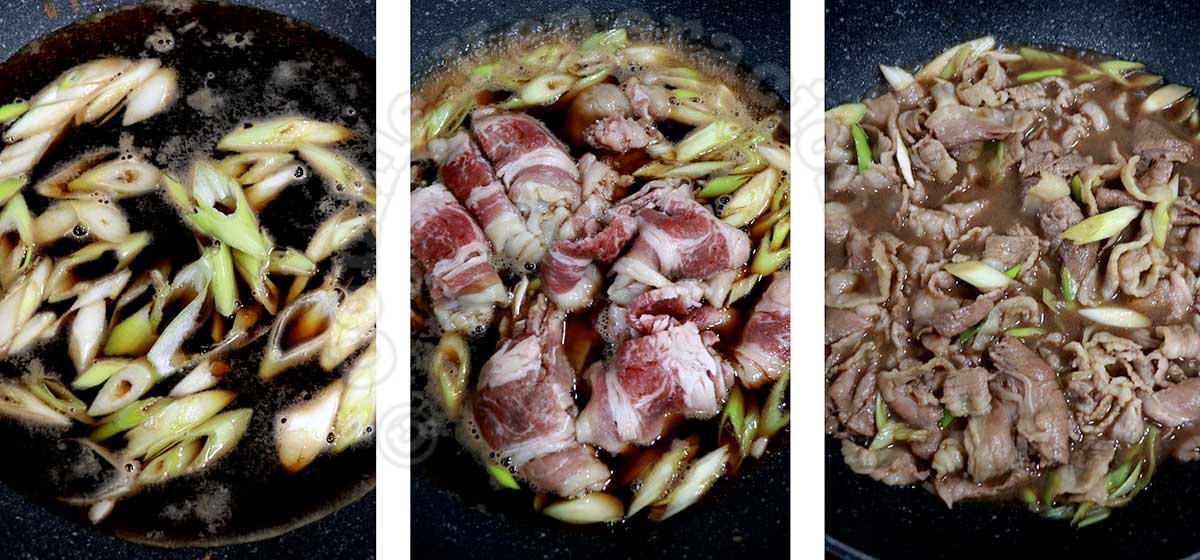
To cook the beef, you boil water, add hondashi, soy sauce, sake, a little sugar and the lower portion of scallion stalks. When the mixture boils, you add the very thinly sliced beef which should have been cut into bite-size pieces. To make sure you get the right cut of beef when you go to the grocery, ask for sukiyaki cut or yakiniku cut beef.
As thin as the beef slices are, you still need to cook them for about fifteen minutes to allow the meat to absorb the flavors in the cooking liquid. As the meat does that, the water evaporates, the flavors concentrate and the color deepens.
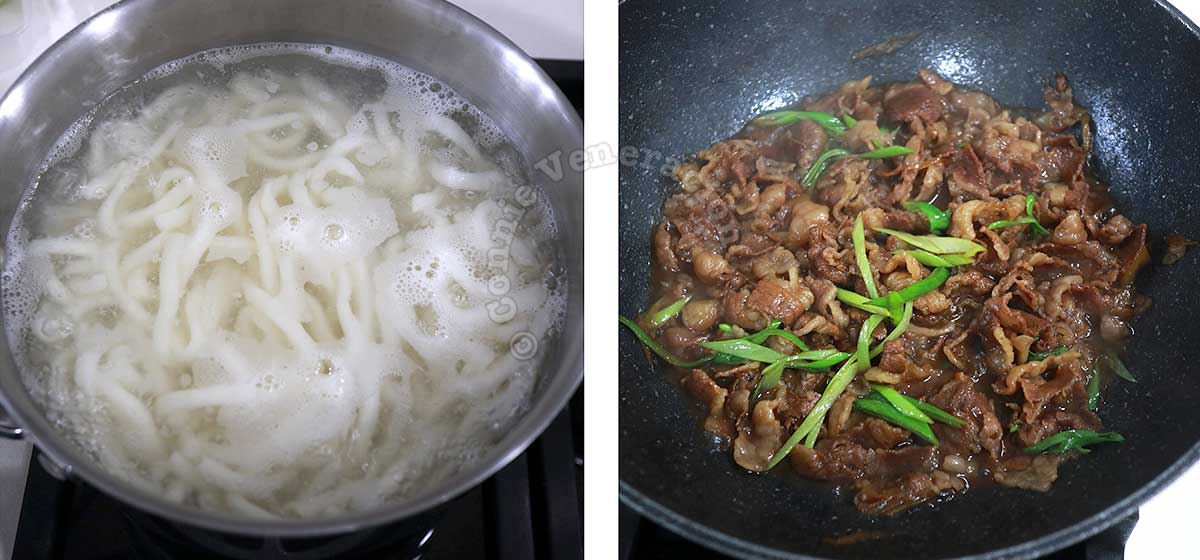
While waiting for the beef to cook, use the time to prep your noodles. Udon is available fresh or dried. The cooking time depends on which kind you have. Fresh noodles take only a few minutes to cook (it’s practically just a matter of refreshing them in boiling water); dried udon needs more time. Check the instructions on the package for the recommended cooking time for the noodles.
Once you have the three components of the dish, all that you need to do is assemble them in bowls. Ladle hot broth into bowls, drop in the udon then top with the braised beef.
Beef udon soup
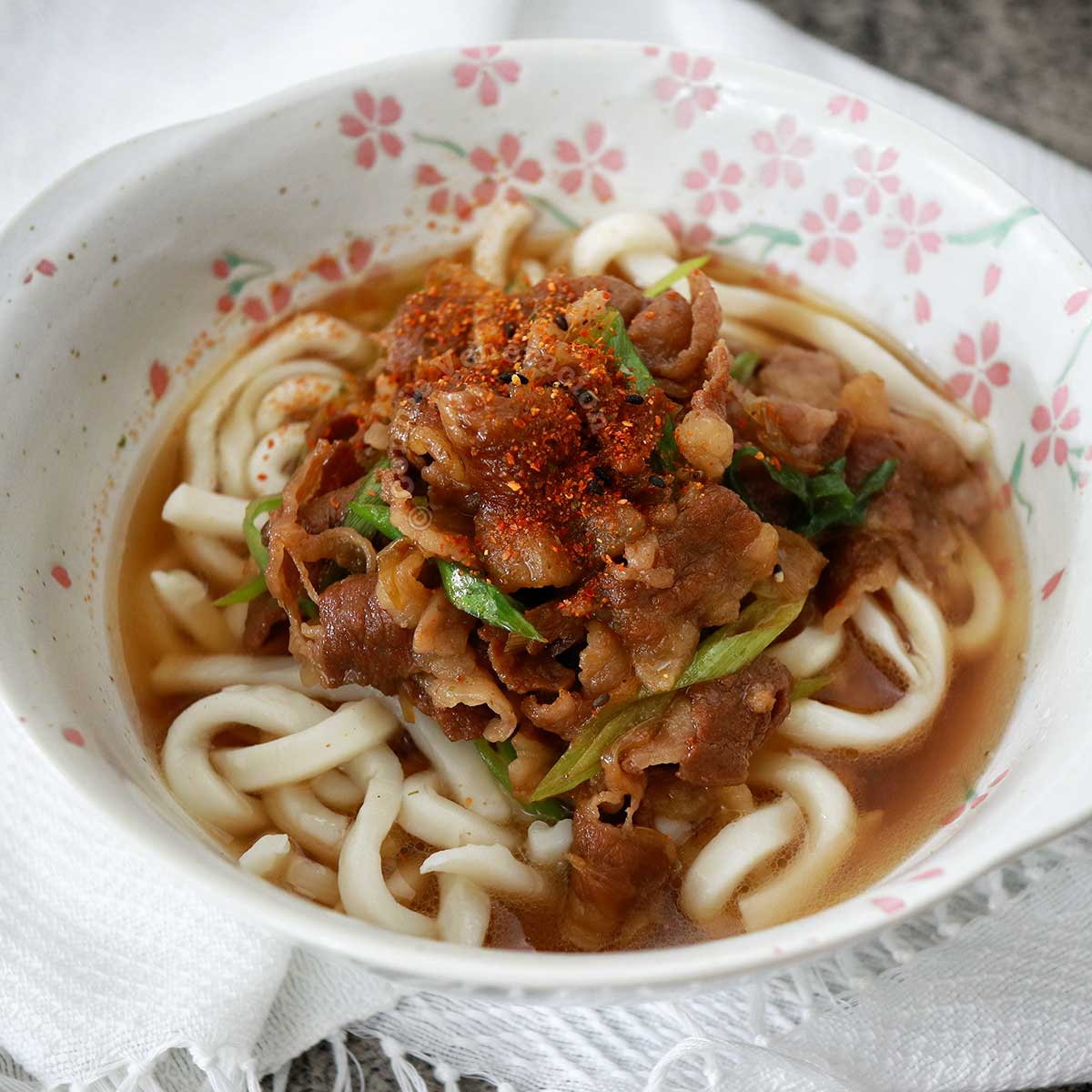
Ingredients
Broth
- 2 packets hondashi each is eight grams in weight
- 4 tablespoons Japanese soy sauce
Beef
- 600 grams thinly sliced beef cut into bite-size pieces
- 1 packet hondashi
- 4 tablespoons Japanese soy sauce
- 4 tablespoons sake
- 1 ½ tablespoons sugar
- 1 ½ cups thinly sliced scallions white and green portions separated
Noodles and garnish
- 3 servings fresh udon about 500 grams
- shichimi togarashi Japanese chili flakes
Instructions
Make the broth
- Pour six cups of water into a pot and set over high heat.
- Pour in the hondashi and stir in the soy sauce.
- Bring to the boil then remove from the heat.
Braise the beef
- Pour a cup and a half of water into a wide pan (a wok works best) and set on the stove over high heat.
- Stir in the hondashi, soy sauce, sake and sugar.
- Add the white portion of the scallions and bring to the boil.
- Add the beef, stirring to separate the thin slices.
- Cook over medium heat, uncovered and with occasional stirring, for about 15 minutes or until almost dry.
- Stir in the green portion of the scallions.
Cook the udon
- While the beef cooks, start reheating the broth.
- Boil six to eight cups of water in a clean pot.
- Drop in the udon and stir to separate the noodle strands.
- Leave until the water comes to a rolling boil and remove the pot from the heat.
- Drain the noodles.
Assemble the beef udon soup
- Prepare three bowls and ladle a third of the broth into each.
- Divide the noodles into three portions and drop a portion into each of the three bowls.
- Top the noodles in each bowl with a third of the braised beef.
- Sprinkle shichimi togarashi on top of the beef and serve.

